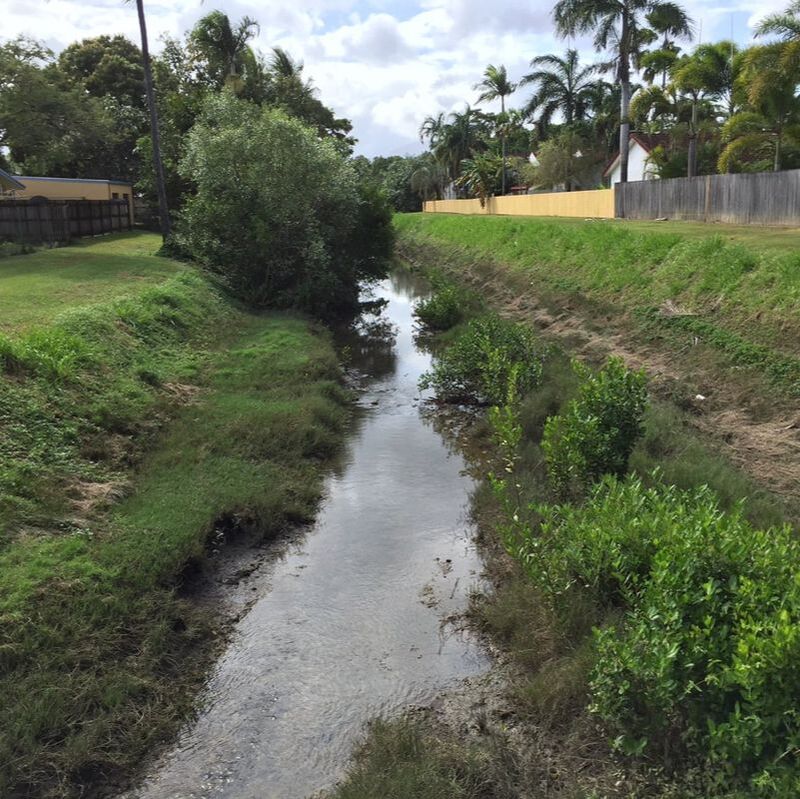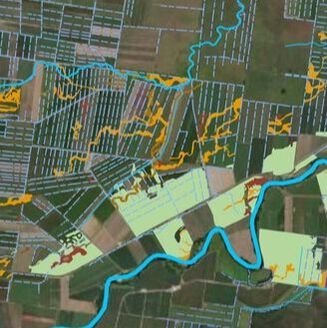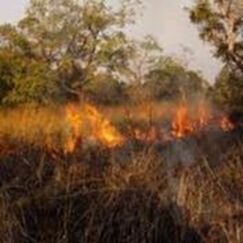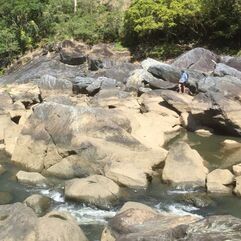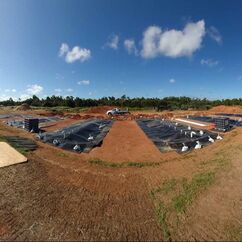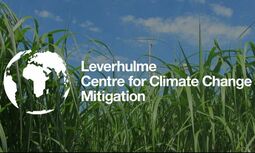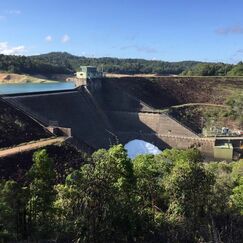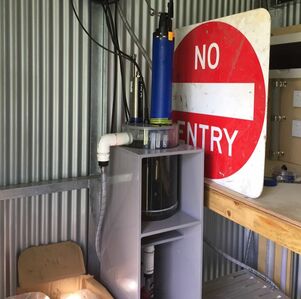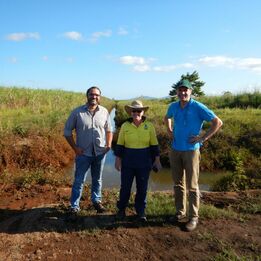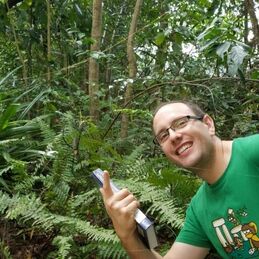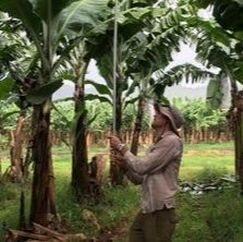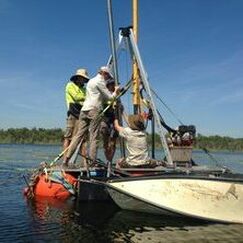Research Outputs
James Cook University's research in 'Environmental Science and Management' and 'Physical Geography and Environmental Geoscience' has been rated above world standard in the ‘Excellence in Research for Australia’ ranking, thanks largely to our group's work.
To see our scientific papers, go to People and click on the staff member's name, or click here and search by author name or topic. To see our recent theses, go to People and click a thesis title at the bottom of the page.
To see our scientific papers, go to People and click on the staff member's name, or click here and search by author name or topic. To see our recent theses, go to People and click a thesis title at the bottom of the page.
Current and Recent Projects (a selection)
|
Improving the flood resilience of a tropical urban catchment
The project models flooding in Cairns (Saltwater Creek) for different climate change scenarios (RCP 4.5, RCP 8.5) and assesses the effectiveness of nature based solutions for flood mitigation. Historical information and tribal science are used to assess modelling results. Funded by Qld. Department of Environment and Science through the Queensland Water Modelling Network, 2022-2023. Contact Han She Lim Modelling unseen flow pathways of water in the Wet Tropics
Water and nutrients moving from paddocks to drains or rivers as shallow groundwater are known to travel faster through sandy palaeochannels than through surrounding sediments that are less permeable. This project is about modelling those flows so the likely effectiveness of management interventions to reduce nutrient runoff can be assessed. Funded by the Qld. Department of Environment and Science through the Queensland Water Modelling Network. 2022-2023. Contact Han She Lim Pyrogenic carbon sequestration in Australian soils
This project will enable the mapping of soil pyrogenic carbon (charcoal) stocks in relation to environmental and soil variables across Australia. The results will enable understanding of the controls on pyrogenic carbon sequestration potential in Australian soils and contribute to ongoing efforts to quantify soil charcoal stocks and dynamics globally. Funded by Australian Research Council. 2022-2023. Contact Michael Bird Documenting the largest floods in the Wet Tropics
The project examines the magnitude and impacts of past extreme floods in the Barron and Daintree catchments using geomorphic evidence (slackwater deposits), historical documents and indigenous knowledge. This information will be used to estimate the impacts of these extreme floods on material fluxes that are of concern for Reef health. Funded by Qld DES. 2022. Contact Han She Lim Aquaculture effluent treatment with bioreactors
This project is the first in Australia and the tropics to assess the ability of ‘denitrification bioreactors’ (woodchip-filled trenches) to remove nutrients from effluent leaving an aquaculture farm. It is being carried out on a barramundi farm in the Great Barrier Reef catchment in North Queensland. Funded by Mainstream Aquaculture and the Australian Govt. 2020-2022. Contact Alex Cheesman Sequestering carbon through enhanced weathering
Arresting the build-up of atmospheric CO2 is one of humanity’s biggest challenges. As part of a global effort, we are testing the idea that the removal of carbon dioxide from the atmosphere through weathering of rocks can be accelerated by applying crushed basalt to sugarcane fields. Click here for more information. Funded by the Leverhulme Trust, 2017-2026. Contact Paul Nelson. |
|
Isotope-enabled modelling of catchment water balance
Catchment water balance modelling can help make more informed water allocation decisions. This project uses stable isotopes of water (rainfall, stream and groundwater) to improve predictions made by catchment water balance models for the Tully and Barron River catchments in North Queensland. Funded by JCU, 2018-2021, in collaboration with the International Atomic Energy Agency (IAEA). Contact Han She Lim |
|
Improving urban runoff water quality using smart sensors and IoT
This project brings smart city technology (Internet of Things and smart sensors) into urban water management to improve urban water quality discharging to the Great Barrier Reef. The project is collaboration between Cairns City Council and JCU. Funded by the Dept of Industry, Innovation and Science to Cairns Regional Council, 2018-2020. Contact Han She Lim |
|
Denitrifying bioreactors to improve water quality
Denitrifying bioreactors are an on-farm technology for removing dissolved inorganic nitrogen from agricultural drainage water. They may have a role in reducing nutrients running to the Great Barrier Reef lagoon. This project, in partnership with Jaragun Pty Ltd, will assess their efficacy in the Wet Tropics. Click here for more information, or here for final report. Funded by Dept of Environment and Heritage Protection, 2017-2020. Contact Alex Cheesman |
|
Long-term monitoring of mangrove forests using Landsat
This project will examine changes in mangrove forests in the Darwin area over 30 years. We will develop an algorithm to process images from the Landsat archive, and then quantify trends in phenological and spatial variations over time. Funded by a JCU Postraduate Fellowship, the Wet Tropics World Heritage Authority (Student Grant) and NIESGI Cia. Ltda, 2016-2020. Contact Nicolás Younes Cárdenas Soil management to reduce Panama disease in bananas
Panama disease (Fusarium Wilt) poses a major threat to the Australian banana industry. We are finding out what soil properties suppress the disease and how suppressiveness might be enhanced. See more here. And here (2021 Science and Innovation Award) Funded by Hort Innovation (BA14014 2.6), 2016-2020. Contact Paul Nelson. |
|
What is natural? Humans, megafauna and climate in Nth Australia
Did human arrival in Australia lead to the extinction of the megafauna and lasting change to Australian ecosystems? In this project we are separating human activity from global climate change effects in shaping the modern environment of northern Australia. Funded by the Australian Research Council (FL140100044), 2015-2019. Contact Michael Bird |
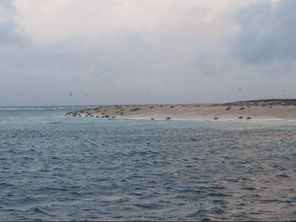
Reef island geomorphology - Raine Island
Raine Island is a low-lying coral cay vulnerable to many climate change impacts. It also has great cultural importance, and is the world’s largest nesting site for green turtles. We’re working to understand how the island will change into the future, and what we can do about it.
Funded by the Great Barrier Reef Foundation, 2016-2018. Contact Scott Smithers
Raine Island is a low-lying coral cay vulnerable to many climate change impacts. It also has great cultural importance, and is the world’s largest nesting site for green turtles. We’re working to understand how the island will change into the future, and what we can do about it.
Funded by the Great Barrier Reef Foundation, 2016-2018. Contact Scott Smithers
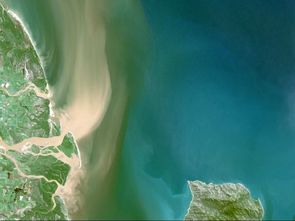
Identifying sources of fine sediment to protect the Great Barrier Reef
What type of sediment transported from rivers via floods has the greatest influence on water clarity in the Great Barrier Reef lagoon? The research will identify the key properties and sources of this material using cutting-edge tracing techniques, enabling more effective actions to improve water quality.
Funded by Qld Dept. of Science, Innovation Technology and Innovation. Contact Zoe Bainbridge
What type of sediment transported from rivers via floods has the greatest influence on water clarity in the Great Barrier Reef lagoon? The research will identify the key properties and sources of this material using cutting-edge tracing techniques, enabling more effective actions to improve water quality.
Funded by Qld Dept. of Science, Innovation Technology and Innovation. Contact Zoe Bainbridge
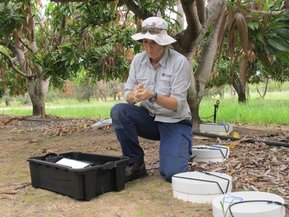
Reducing greenhouse gas emissions from mango and banana cultivation
Agricultural soils are a significant source of the greenhouse gases nitrous oxide and carbon dioxide. We are examining how enhanced-efficiency fertilisers and mulching practices might be used to reduce greenhouse gas emissions from banana and mango fields.
Funded by Carbon Farming Initiative (AOTGR2-0076), 2013-2017. Contact Paul Nelson
Agricultural soils are a significant source of the greenhouse gases nitrous oxide and carbon dioxide. We are examining how enhanced-efficiency fertilisers and mulching practices might be used to reduce greenhouse gas emissions from banana and mango fields.
Funded by Carbon Farming Initiative (AOTGR2-0076), 2013-2017. Contact Paul Nelson
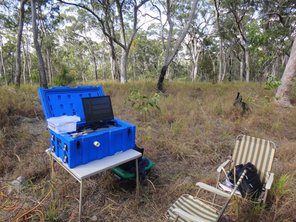
Mobile Isotope Monitoring for Environmental Studies
We use stable isotopes of carbon, oxygen and hydrogen as tracers of processes in the carbon and water cycles. Portable laser spectrometers enable us to carry out high-frequency, real-time analysis to help identify sources and sinks of carbon in forest and savanna landscapes and to understand tropical rainfall patterns and water use by plants.
Funded by the Australian Research Council (LE110100144, LE130100159). Contact Niels Munksgaard
We use stable isotopes of carbon, oxygen and hydrogen as tracers of processes in the carbon and water cycles. Portable laser spectrometers enable us to carry out high-frequency, real-time analysis to help identify sources and sinks of carbon in forest and savanna landscapes and to understand tropical rainfall patterns and water use by plants.
Funded by the Australian Research Council (LE110100144, LE130100159). Contact Niels Munksgaard
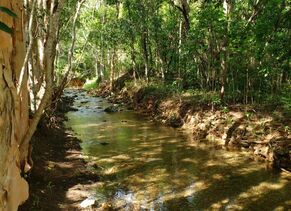
Water and biogeochemical fluxes in a tropical rainforest
We continuously monitor water and geochemical fluxes in Atika Creek on JCU's Cairns campus. The work helps us understand how water moves through a rainforest system and provides baseline data by which to compare impacts of climate change and human activity on tropical catchments.
Funded by JCU. Contact Han She Lim
We continuously monitor water and geochemical fluxes in Atika Creek on JCU's Cairns campus. The work helps us understand how water moves through a rainforest system and provides baseline data by which to compare impacts of climate change and human activity on tropical catchments.
Funded by JCU. Contact Han She Lim
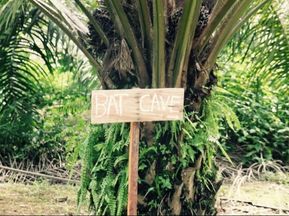
Using cave guano to reconstruct past tropical environments
Records of past environments can be found in caves, in the faeces (guano) of bats or birds roosting there. We are exploiting these records to reconstruct palaeoenvironments, especially the extent of savannas and rainforest refugia, over the Last Glacial Period in island southeast Asia.
Funded by National Geographic Society and Australian Research Council (DP140101319), 2010-2016. Contact Chris Wurster
Records of past environments can be found in caves, in the faeces (guano) of bats or birds roosting there. We are exploiting these records to reconstruct palaeoenvironments, especially the extent of savannas and rainforest refugia, over the Last Glacial Period in island southeast Asia.
Funded by National Geographic Society and Australian Research Council (DP140101319), 2010-2016. Contact Chris Wurster

